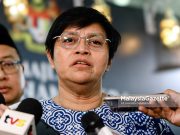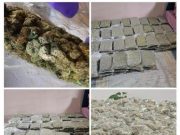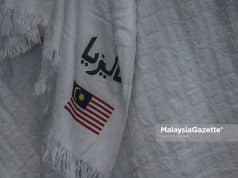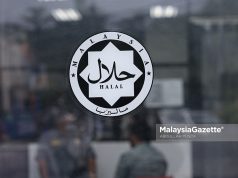Through history, hikayat & heritage
“hai enche’ jurubatu… bolehkah hamba menumpang naik ka-geliong panjang ini? Apakah nama enche jurubatu dan siapakah yang menjadi jurumudi-nya. Apakah gerangan nama enche’ nakhoda geliong panjang ini?”
Hikayat Awang Sulong Merah Muda
How does an ethnologist or archaeologist study the civilization of a people? Careful research is needed on the way of life, history, origins, ancient literature, as well as the study of ancient tools, architecture, and artifacts. In the same way, ancient hikayat and legends can serve as one of the keys to understanding the past, providing insights into the daily life of the Malay world hundreds of years ago.
The Malay Archipelago, especially Semenanjung Tanah Melayu was a world destination since the time Claudius Ptolemy depicted Chersonesus Aurea on his map Geopraphica circa 2 AD. Today, archaeological discovery at Sungai Batu proves Kedah’s position as an important center for iron smelting and a major port, supplying qalai iron for weapon production over two thousand years ago.
Equipped with skills in navigation, trade, industrial and maritime knowledge, Malay civilizations like Champa, Srivijaya, Majapahit, Langkasuka, and Kedah pioneered the formation of ancient maritime kingdoms in the region long before Pasai, Melaka, Patani, and Acheh. The Straits of Melaka, the busiest natural strait in the world, became the hub of trade for commodities such as spices, silk, ceramics, and gold.
Therefore, it only makes sense that the maritime is intrinsic to our life and culture.
From the Hikayat. History. Heritage
A People whose culture is intertwined with the ocean undoubtedly uses a language rich with maritime terms. This is interpreted in the Malay arts, culture, and literature. Beautiful Malay carvings adorn Malay boats and ships, showcasing expertise in wood and ironwork. In our language, we find tools and adornments such as “bangau”, “okok,” and “caping,” as well as essential items for long voyages such as ‘teropong emas’ (golden telescopes) and ‘peti besi’ (iron chests or boxes).
From the hikayat, ships such as Bunga Rampai Layangan Angin, Mendam Berahi, and Cakra Dunia from Acheh appear in the tales of Malay maritime voyages. Skilled sailors ventured to distant lands like China, Egypt, Mecca, and Istanbul. The legends of Laksamana Hang Tuah, Hang Nadim, and Sang Nila Utama are etched in the Sulalatus Salatin. The story of Hang Tuah is recognized by UNESCO and Admiral Keumalahayati from Acheh is acknowledged by UNESCO as the world’s first female admiral.
Beyond hikayat, the pantun, gurindam and syair as well as cultural arts like Makyung, are evidence to a way of life closely connected to the sea. For example, there is the classic pantun:
Pisang emas dibawa belayar
Masak sebiji di atas peti
Utang emas boleh dibayar
Utang budi dibawa mati
or
asam di darat ikan di laut
dalam belanga bertemu juga
or
Kalau takut dilambung ombak
Jangan berumah di tepi pantai
When we pay attention to the language, we see the unmistakable narratives and vocabulary that serve as a “time capsule” from the past.
For example, in the legend of Hikayat Awang Sulung Merah Muda, many activities of the Malay world are depicted in detail, such as a prince’s rites of passage, the opening of lands and yes, life at sea. When Awang Sulong’s cousin, Puteri Dayang Nuramah, was preparing to embark on a sea voyage, she was to be accompanied by young ladies only, from captain to deck hands.
Himpunkanlah anak-anak dara datang mengadap ke istana.”
“Lalu bertitah Datok Batin Alam kepada Bujang Selamat, Pergilah kau panggil mualim, jurubatu, jurumudi sekeliannya suruh siapkan kakap Bunga Rampai Layangan Angin itu serta alat senjata alat peperangan.”
***
“Tinggal sekelian anak dara; ada yang menjadi mualim, jurumudi, jurubatu masing masing dengan jawatannya. Maka kakap pun belayar.”
Far out at sea, the princess spotted the geliong belonging to Princess Jawa Puteri Dayang Seri Jawa. Both ships raised their yellow flags, and Puteri Dayang Nuramah boarded the geliong. She was welcomed with betel leaves and exchanged pantun – a display of courtesy among noble princesses.
This is the story of two brave princesses of the Malay world who ventured out to sea, not forgetting their adat, adapt at using firearms and cannons.
And from the Syair Siti Zubaidah, here is Sultan Zainal Abidin who captained his ship Fathu’l-Zaman, a magnificent ship equipped with weaponry and cannons. A ship that had to withstand storm and gale at sea.
Kapal pun sudah lalu diturunkan
Tali menali sekelian dikenakan
Kamar beranda sekelian dihiaskan
Tunggul bendera Sudan dinaikkan
Turunlah ribut bukan kepalang
Langit pun hitam sepeti arang
Seperti bukit rupa gelombang
Tubuh kapal sepertikan hilang
Local wisdom and skills
Before we conclude on the Malay Maritime legacy, let us first examine the abilities of the Malay people inherent to ship-building. We know of the Orang Melayu are excellent builders, constructing palaces, mosques, halls, as well as boats and river house-boats – woodwork is their talent ingrained, and their expertise in all flora and fauna of the tropical jungle is legendary.
Most ships use cengal wood, which is widely available in the Malay Archipelago, especially in the Peninsula. In addition to wood, gelam bark, bamboo, and nipah leaves are also used for various boat functions. Gelam bark is especially used as water insulation for the inside of the boat.
There are many more secrets of Malay navigational knowledge, from reading the stars, to the different colours of waves at sea, observing clouds and storms, as well as the monsoon season and wind changes.
The important thing is that this knowledge has been passed down through generations in the Malay World.
Legal framework: Hukum Kanun Melaka
If we look at Hikayat Pahang, Hikayat Johor, Misa Melayu, Hikayat Hang Tuah, and many more literary stories from the Malay world, we will find many references to the maritime culture. The story of Enrique of Melaka or Panglima Awang takes the theory of the first person to circumnavigate the world further and has been studied by scholars from Portugal and the Philippines.
The Enrique de Malacca Memorial Project exhibition by Ahmad Fuad Osman in the UAE was sponsored by the Sharjah Art Foundation. The navigator’s life story as a translator and loyal companion to Ferdinand Magellan, as well as his return to the Malay Archipelago, has become a legend told in Malaysia, the Philippines, Sumatra, and many academic discussions.
Therefore, when the Hukum Kanun or the laws of the Malay world have specific chapters for maritime legislation, it clearly shows the importance of the maritime world to the Malays. The Kitab Kanun reflects the significance of life connected to and dependent on the sea, to the extent that specific laws were necessary, in addition to Hukum Kanun Melaka.
In 2014, at the International Exhibition of National Library, Malaysia, I learned that the oldest manuscript of the undang Undang Melaka is preserved at the Vatican City Library. According to Dr. Liaw Yock Fang, the manuscript stored there is the Vatican Ind. IV Malakaans Wetboek van Zeerecht (Maritime Law). He further states that this manuscript, preserved in Vatican City since the early 17th century, is the “best manuscript of the Malacca laws” (Liaw 1976).
The question remains, why is this manuscript of Malay Maritime Law preserved in the Vatican City Library?
***
The Malay expertise in maritime affairs not only helped developed the Malay World, but also strengthened trading power and the exchange of knowledge and culture with other civilizations. Through our maritime knowledge, we would be able to establish the influence of our nation as an important world civilization.
Through our traditional narratives, we can peek into the wealth of Malay thoughts and the dignified identity that existed centuries ago.
Hopefully, this can instill a sense of pride in our people to recognize the maritime heritage of the Malays.
Ninot Aziz
Poet, Author and Folklorist

















